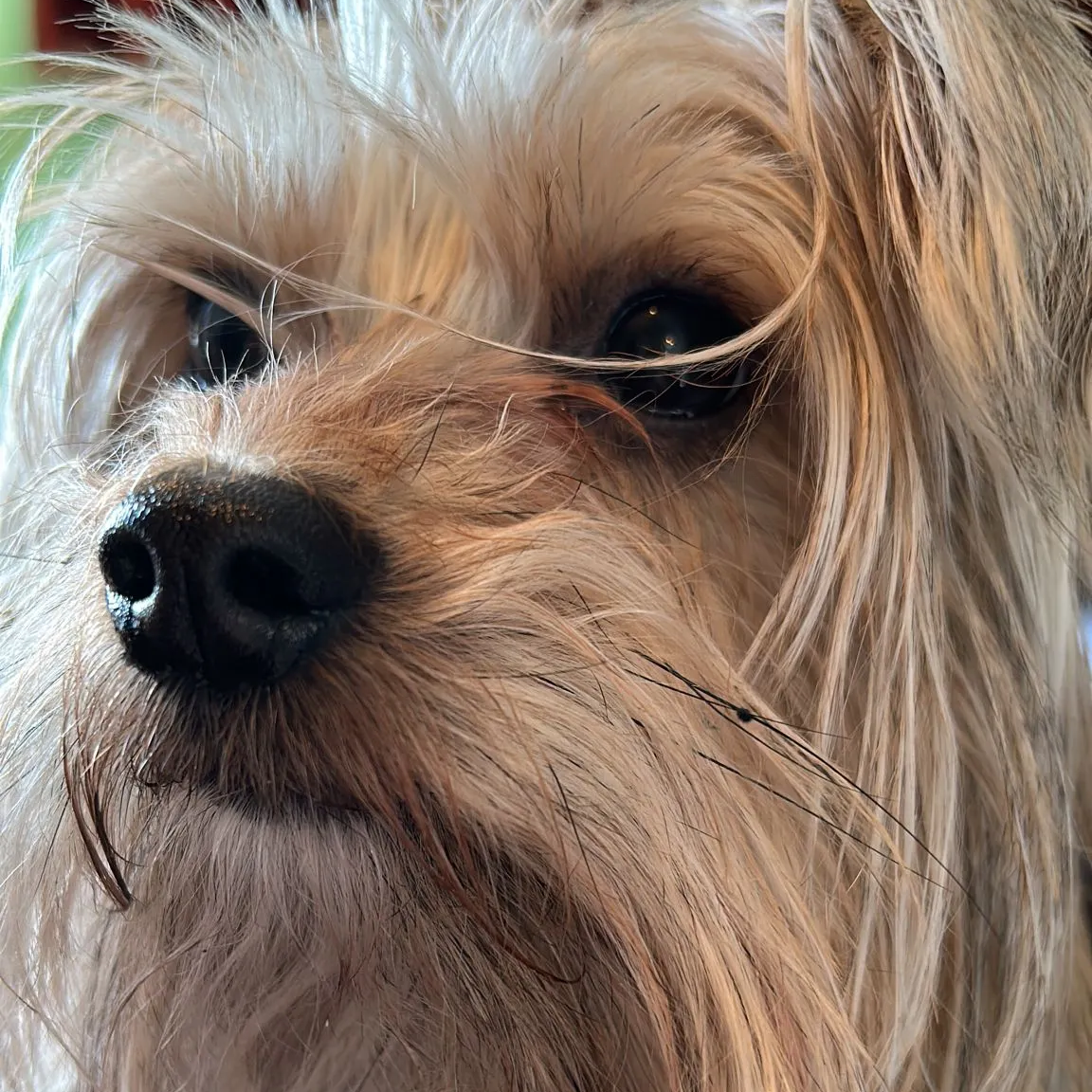Researchers in the UK claim to have translated the sound of laptop keystrokes into their corresponding letters with 95 percent accuracy in some cases.
That 95 percent figure was achieved with nothing but a nearby iPhone. Remote methods are just as dangerous: over Zoom, the accuracy of recorded keystrokes only dropped to 93 percent, while Skype calls were still 91.7 percent accurate.
In other words, this is a side channel attack with considerable accuracy, minimal technical requirements, and a ubiquitous data exfiltration point: Microphones, which are everywhere from our laptops, to our wrists, to the very rooms we work in.
Quite scary considering the accuracy and how many open mics everyone is surrounded by without even realizing it. Not to mention if any content creator types their password while live streaming or recording they could get their accounts stolen.
One more reason to switch to a password manager, even though they could still find out the master password…
Probably still have some safety if you’re using two-factor, or have a master key in addition to a password (e.g. 1Password).
Or use a local password safe like keepass.
This has been a known attack vector for years, and I wonder how no livestreamer has been (publicly) attacked in this way.
I guess in large part this can be attributed to 2FA, passwords just aren’t worth much by themselves anymore (well I guess if someone is quick enough they can snipe the OTP as well, but streamers are rarely entering their 2FA while streaming since they’re on a trusted device).
In fact the biggest attack vector I’d worry about is the infamous SMS 2FA, which is actually 1FA for password resets, which is actually 0FA “yes dear phone operator I am indeed Mister Beast please move my phone number to this new SIM”.
New policy from the corporate office: If you are working in a public place, like a coffee shop, please scream while typing your login password.
I screamed my password and now I got hacked. Thanks for nothing!
I guess my typos are now a security feature!
Neat, so when my friends are taking about satisfyingly clackety keyboards I can inform them it’s a security hazard.
I’ll accept the risk. I need the clicky
Good luck, I have a non standard key layout
It’s still vulnerable to dictionary attacks
Except it’s not
??? If you can map sound to qwerty keystroke placement, then it’s a simple matter of mono alphabetic substitution for other layouts to generate candidate texts. Using a dictionary attack to find more candidate layouts would absolutely work.
No, all the timings change. You can’t just swap out the letters and hope it matches. Additionally I was responding to the poster claiming a dictionary attack on a password would work - only if it’s in the dictionary.
Dvorak?
Middle management will finally get rid of clacky keyboards with this weird trick
I’d be curious how well this approach translates to multi-lingual keyboard layouts. For english users, perhaps theres another benefit to non-QWERTY layouts (e.g. Colemak or Dvorak) after all? … and two factor authentication should remain helpful I presume. Especially physical key methods with no audible characters typed (e.g. Yubikey, Titan, etc.)
I was thinking the same, but it would be trivial for software to realize that “fnj xlg” maps to “the dog” with Colemak or Dvorak.
I wonder if different switches, keycap profiles, keyboard material ect affect the accuracy?
Not to be a jerk, but is this actually new? I’ve heard of this being done at least ten years ago…
On another note, one way to beat this (to a degree) would be to use an alternate keyboard like Dvorak (though you could probably code it to be able to detect that based on what’s being typed)
I think it’s largely been a state actor thing. Directional microphone to record your window from across the street, spend significant tax money on crunching numbers on a supercomputer to get at your password kind of thing, I think they already could do it in the 90s. Real-time 95% accuracy on a non-specialised device is a quite different ballpark: Now every skiddie can do it.
Gotcha, that makes more sense
Coding for alternate key mappings is almost as trivial as detecting other languages.
Yeah, that’s what I figured
Some laptops like the Framework laptop have fingerprint sensors
Physical Security keys like NitroKeys or YubiKeys are another option
I don’t see the relevance.
You can use fingerprint or U2F to unlock your password manager and copy the password. That way you don’t have to type it in.
That does nothing for keylogging through this method.
It would have to be combined with a secure (no microphones) area during setup, but it seems like swapped biometric plus token would defeat this attack (password gathering). It would however not defeat generic data collection.
It would eliminate someone being able to get your username or password via this method though. Because you never have to type them in.
With my MacBook I can use either touchid or my watch to automatically unlock it, so I don’t even have to type my password in to get into my laptop. And then I use touchid and Keychain for all my passwords so I never have to type those in either.
I never learned to touch-type, so my typing style is very different from most people though I can type fast enough for work.
My typing style only uses 3 fingers, and both hands type keys in the middle of the keyboard.
I wonder if this has any effect on accuracy?
Edit: Article states touch-typing can reduce accuracy. Wonder if that’s because they type more softly than us tech gorillas who tend to bash on the keys?
I’m a touch typist who can reach 160wpm when I’m really flowing, I would guess the speed makes accuracy harder to distinguish individual keys than you pressing keys with three fingers.
I type an awful lot slower than you, and still it’s faster than I can think. How do you think of what to type fast enough to type at 160wpm?
Not the original person you responded to, but I type 120ish wpm. The trick is to try to tap into the same part of your brain that verbalizes words when you talk, rather than the part that composes stuff when you write.
That speed is usually transcription for me, I’m listening to someone and type what I hear. Actual writing and composing a thought typing speed is closer to 120wpm or so. I learned to type on a typewriter which is much slower, current low profile mech keyboard contributes to faster typing speed too.
I could see that, makes sense.
Might have to spend some time getting Easy Effects/Noise Torch set up on my systems again just to reduce the vectors again.
There is a good comment on this post on physical mitigation that seems helpful as well: https://www.reddit.com/r/Fedora/comments/uerp9z/comment/i6p0jqa/?utm_source=share&utm_medium=mweb3x&utm_name=mweb3xcss&utm_term=1&utm_content=share_button
Isn’t boffin a derogatory term like “nerd”?
What a dogshit headline.
Article also uses the term “eggheads”.
To go from keystroke sounds to actual letters, the eggheads recorded a person typing on a 16-inch 2021 MacBook Pro using a phone placed 17cm away and processed the sounds to get signatures of the keystrokes.
It can be. Being a boffin, I’m not offended. Up to the individual if they choose to be offended.
Still shitty journalism to refer to researchers publishing their research in that way.
Meh, I wear such labels as badges of honor. I sacrificed a bit along the way to develop knowledge, skills, competence - I’ve earned it. Thanks for acknowledging it.
I also see such things in a humorous light. I mean us “boffins” can be such boffins at times. We can over-focus, get caught up on perfectionism, etc, etc. If’n ya can’t laugh at your own foibles, well, I don’t know what to say.
It’s The Register - think the Financial Times for IT but in the style of The Sun/any other British tabloid. They do it for the lulz, if you will - don’t get too hung up on the headlines as the content is top quality.
This is old news. This article was published on 7 Aug 2023.
This method is far older than that, and it keeps popping up every so often as a “new” attack. First time I read about this method was in the early 2000’s, and I’m pretty sure it been done before that as well.
I first heard about it in the Snowden leaks, but I have no doubt it was discovered earlier.
Another advantage to the split keyboard
This attack is useless in the real world.
That said, what gives you the idea a split keyboard (if they had a sample of you typing on it etc) would be any different than a normal one?
It is just another keyboard with a different sound profile.
This is the best summary I could come up with:
In other words, this is a side channel attack with considerable accuracy, minimal technical requirements, and a ubiquitous data exfiltration point: Microphones, which are everywhere from our laptops, to our wrists, to the very rooms we work in.
To make matters worse, the trio said in their paper that they’ve achieved what they claim is an accuracy record for acoustic side-channel attacks (ASCA) without relying on a language model.
Luckily in this case it’s not power usage, CPU frequencies, blinking lights or RAM buses leaking data unavoidably, but a good old-fashioned problem occurring between the computer and chair that can actually be mitigated somewhat easily.
The researchers note that skilled users able to rely on touch typing are harder to detect accurately, with single-key recognition dropping from 64 to 40 percent at the higher speeds enabled by the technique.
Working among the clacking of phantom keyboards would surely annoy everyone, which is why the researchers suggest only adding the sounds to Skype and Zoom transmissions after they’ve been recording instead of subjecting employees to real-time noisemakers.
Followup research is now going on into using new sources for recordings, like smart speakers, better keystroke isolation techniques and the addition of a language model to make their acoustic snooping even more effective.
The original article contains 656 words, the summary contains 210 words. Saved 68%. I’m a bot and I’m open source!
Idk how it works with non-NVIDIA GPUs but get Nvidia Broadcast or an equivalent. Its a life saver.
macOS Sonoma has just updated with camera effects/reactions and “voice isolation” which works just like NVIDIA Broadcast/RTX Voice, luckily.
It doesn’t do a very good job of removing my keyboard noise for some reason, and it makes my voice sound noticably worse 😔
Mines perfect, my baby can’t even scream in my mic. It gets caught. I don’t recall messing with settings, and my GPU is a 2080 TI. Idk, hardware maybe? Theres not much to mess with.











